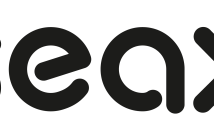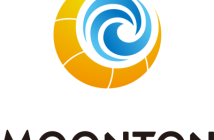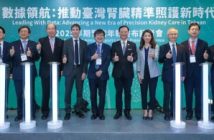- Contextualizes the Russia-Ukraine conflict for the medium term
- Discusses carbon reduction through the lens of net-zero banking commitments and agricultural infrastructure
- Identifies how to approach a fixed-income portfolio with rising inflation and tightening accommodation and quantifies how inflation is affecting retirement portfolios
- Examines the need to review how we study the U.S. labor market in light of changing demographics and attitudes toward work
HONG KONG – Media OutReach – 11 March 2022 – Manulife Investment Management today released Global Intelligence, its semiannual report with firmwide analysis and relevant perspectives from its investment teams. The H1 2022 report discusses the factors that have contributed to recent market volatility and explores how the Russia-Ukraine conflict, rising inflation, supply chain issues, sustainability, and worker shortages could affect investment opportunities as the global economy works to find its postpandemic footing.
“In our most recent Global Intelligence, we’ve highlighted the numerous challenges and opportunities in today’s markets,” said Paul Lorentz, president and CEO at Manulife Investment Management. “The topics discussed are designed to help investors manage the risks associated with the military conflict and humanitarian crisis in Ukraine, discover new sources of yield, evaluate sustainability solutions, source retirement income, and recognize the forces within the global macro landscape that may affect their portfolios over the long term.”
Christopher P. Conkey, CFA, global head of public markets at Manulife Investment Management, said, “Dramatic changes in the geopolitical and economic landscape are prompting investors to rethink assumptions and reassess risk. We believe this is a time for active management to add value, and we’ve highlighted several areas where our research is helping investors do just that.”
Stephen J. Blewitt, global head of private markets at Manulife Investment Management, said, “Among the opportunities we see in the current environment are the ways in which innovations in agricultural infrastructure are making agriculture both more productive and more sustainable. These strategies may be more immediately significant as we anticipate the stress affecting global commodities.”
Asset class themes and observations within Global Intelligence include:
- Incorporating the Russia-Ukraine conflict in a global macro outlook—Frances Donald, global chief economist and strategist, multi-asset solutions, offers perspective on the evolving situation in Ukraine in a medium-term outlook. Frances notes that the trajectory of the event adds conviction to the team’s existing call that the first half of 2022 will face stagflationary dynamics and that the second half of 2022 will face hurdles to growth and lower inflation.
- Net-zero emissions: pledges abound, but few banks are on a path to meet their commitments—Frederick Isleib, CFA, director of ESG research and integration, and Omar Soliman, ESG analyst, explore the pivotal role banks will play in steering the world toward a lower-carbon future. Their analysis suggests that while many banks have made net-zero pledges, few so far are meeting the pace of change required to meet those goals.
- From farm to fork: overcoming supply chain vulnerabilities with agriculture infrastructure innovations—Oliver S. Williams IV, CFA, global head of agriculture investments, and Recep C. Kendircioglu, CFA, FRM, head of infrastructure investments, present compelling reasoning to improve agricultural production and address supply chain issues through controlled environmental agriculture (CEA). With the agriculture industry facing a future characterized by natural resource scarcity, supply chain vulnerabilities, and more frequent extreme weather events, the greater incorporation of CEA technology into food production offers a sustainable path forward and may offer specific advantages to open-field farming with the additional benefit of reducing carbon emissions.
- Not all pluses are equal: the case for an active approach to fixed-income spread sectors—Howard C. Greene, CFA, co-head of U.S. core and core-plus fixed income, Daniel S. Janis III, head of global multi-sector fixed income, and Endre Pedersen, deputy CIO, global fixed income, and CIO, global emerging-market fixed income, see the challenges of the fixed-income market today solved by taking an active, broad-based approach to the markets. While the risks posed by rising rates, high inflation, and tight valuations are unlikely to abate in the near future, there are still plenty of levers for active investors to pull: Global diversification, allocating to underused sectors, targeted yield curve positioning, and active currency exposure are all proven tactics that can add potential value in challenging markets.
- Inflation’s impact on retirement portfolios: quantifying the future cost today—Alex Grassino, head of macro strategy, North America, and Émilie Paquet, FSA, head of strategic initiatives and innovation, multi-asset solutions, enlighten investors to the fact that small increases in inflation can have outsize impacts on their retirement portfolios. After discussing the team’s long-term outlook for inflation and the forces that are driving it to levels not seen in decades, they reveal how investors can use some fairly simple formulas to quantify the effects on their own portfolios. Importantly, they also discuss the concrete actions that investors can take today to mitigate the painful impact that rising prices can have on their plans for retirement.
- Five trends shaping the U.S. labor market—Erica Camilleri, global macro strategist, Frances Donald, and Alex Grassino, head of macro strategy, North America, multi-asset solutions, contextualize recent developments in the U.S. labor market and argue that economists need to think outside the box to better understand the rapidly transforming job market.
For more information and to view the full report, please click here:
Hong Kong – https://www.manulifeim.com/institutional/hk/en/global-intelligence
Singapore – https://www.manulifeim.com/institutional/sg/en/global-intelligence
Taiwan – https://www.manulifeim.com/institutional/tw/en/global-intelligence
Malaysia – https://www.manulifeim.com/institutional/my/en/global-intelligence
About Manulife Investment Management
Manulife Investment Management is the global brand for the global wealth and asset management segment of Manulife Financial Corporation. We draw on more than a century of financial stewardship and the full resources of our parent company to serve individuals, institutions, and retirement plan members worldwide. Headquartered in Toronto, our leading capabilities in public and private markets are strengthened by an investment footprint that spans 18 geographies. We complement these capabilities by providing access to a network of unaffiliated asset managers from around the world. We’re committed to investing responsibly across our businesses. We develop innovative global frameworks for sustainable investing, collaboratively engage with companies in our securities portfolios, and maintain a high standard of stewardship where we own and operate assets, and we believe in supporting financial well-being through our workplace retirement plans. Today, plan sponsors around the world rely on our retirement plan administration and investment expertise to help their employees plan for, save for, and live a better retirement. Not all offerings are available in all jurisdictions. For additional information, please visit  manulifeim.com.
manulifeim.com.
#ManulifeInvestmentManagement
The issuer is solely responsible for the content of this announcement.





